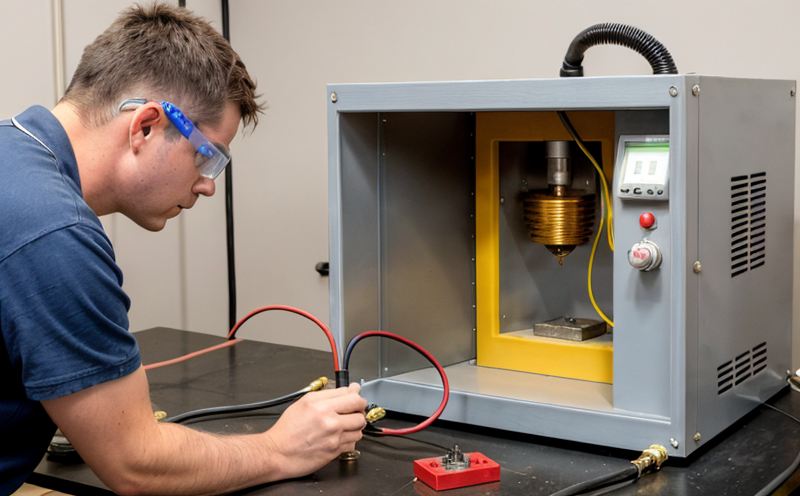ASTM B193 Conductivity of Copper Alloys
The ASTM B193 standard is a crucial test method used to measure the electrical conductivity of copper and its alloys. This test is essential for ensuring that materials meet specific quality standards, which in turn affects product performance and reliability. The test follows strict procedures outlined by the American Society for Testing and Materials (ASTM). Compliance with this standard ensures that manufacturers can produce consistent products that meet industry requirements.
The ASTM B193 testing process involves several key steps. First, the specimen is prepared according to the specified dimensions in the standard. Then, the sample undergoes a series of electrical resistance measurements using a calibrated instrument designed for this purpose. The results provide an accurate measurement of the material's conductivity.
Understanding the significance of these tests goes beyond just quality control; it also impacts various aspects such as product performance and safety. For instance, in electronics manufacturing, accurate conductivity data helps engineers design circuits that operate efficiently within specified limits. In construction applications, knowing a metal’s electrical properties can guide decisions about its suitability for grounding or other critical functions.
The ASTM B193 test results play a vital role in both regulatory compliance and internal quality assurance programs. Regulatory bodies often require proof of conformance to certain standards as part of their certification processes. Additionally, many industries have internal protocols that mandate adherence to specific conductance levels for safety reasons or operational efficiency.
By ensuring consistent conductivity across batches or suppliers, manufacturers can maintain high-quality products and avoid costly rework due to non-compliance issues later down the line. Moreover, accurate testing supports continuous improvement initiatives by providing reliable data points against which improvements can be measured.
- Use Cases: Electronic component manufacturing, aerospace industry, automotive assembly lines
- Applications: Semiconductor fabrication plants, power transmission infrastructure projects
Customer Impact and Satisfaction
The implementation of ASTM B193 testing has profound implications for customers who rely on high-quality copper alloys. By adhering to this standard, laboratories provide assurance that the materials they receive meet stringent quality criteria. This reliability fosters long-term partnerships based on trust and dependability.
For industries like electronics manufacturing or aerospace engineering where precision is paramount, knowing that each batch of copper alloy meets the specified conductivity ensures consistent performance across all components. Such consistency translates directly into better product quality and enhanced customer satisfaction.
In terms of regulatory compliance, ensuring adherence to ASTM B193 helps avoid potential penalties associated with non-compliance. It also demonstrates a commitment to excellence which can enhance brand reputation among consumers looking for trustworthy suppliers.
Environmental and Sustainability Contributions
The environmental impact of conducting ASTM B193 tests is minimal compared to the broader benefits they bring. The process itself does not produce significant waste or emissions; instead, it focuses on accurately measuring material properties.
However, by enabling more efficient use of resources through better quality control practices, there are indirect positive environmental impacts. For example, reduced rejections during production stages translate into less energy consumption and fewer raw materials being wasted. In addition, knowing the exact conductivity helps optimize designs which can lead to longer-lasting products requiring fewer replacements over time.
Moreover, compliance with ASTM standards supports broader sustainability goals by promoting responsible sourcing practices that favor suppliers meeting rigorous quality benchmarks. This approach ensures that all stakeholders from mining operations through final assembly contribute positively towards sustainable development objectives.
Use Cases and Application Examples
- Electronic Manufacturing: Ensuring that printed circuit boards (PCBs) made from copper alloys have the correct conductivity to support efficient signal transmission.
- Aerospace Industry: Verifying the electrical properties of structural components used in aircraft frames or wiring harnesses.
- Automotive Assembly Lines: Checking the integrity and performance of ignition systems and other electronic controls integrated into vehicles.
- Semiconductor Fabrication Plants: Guaranteeing that metal parts like heat sinks or connectors used in semiconductor packaging meet required electrical standards.





